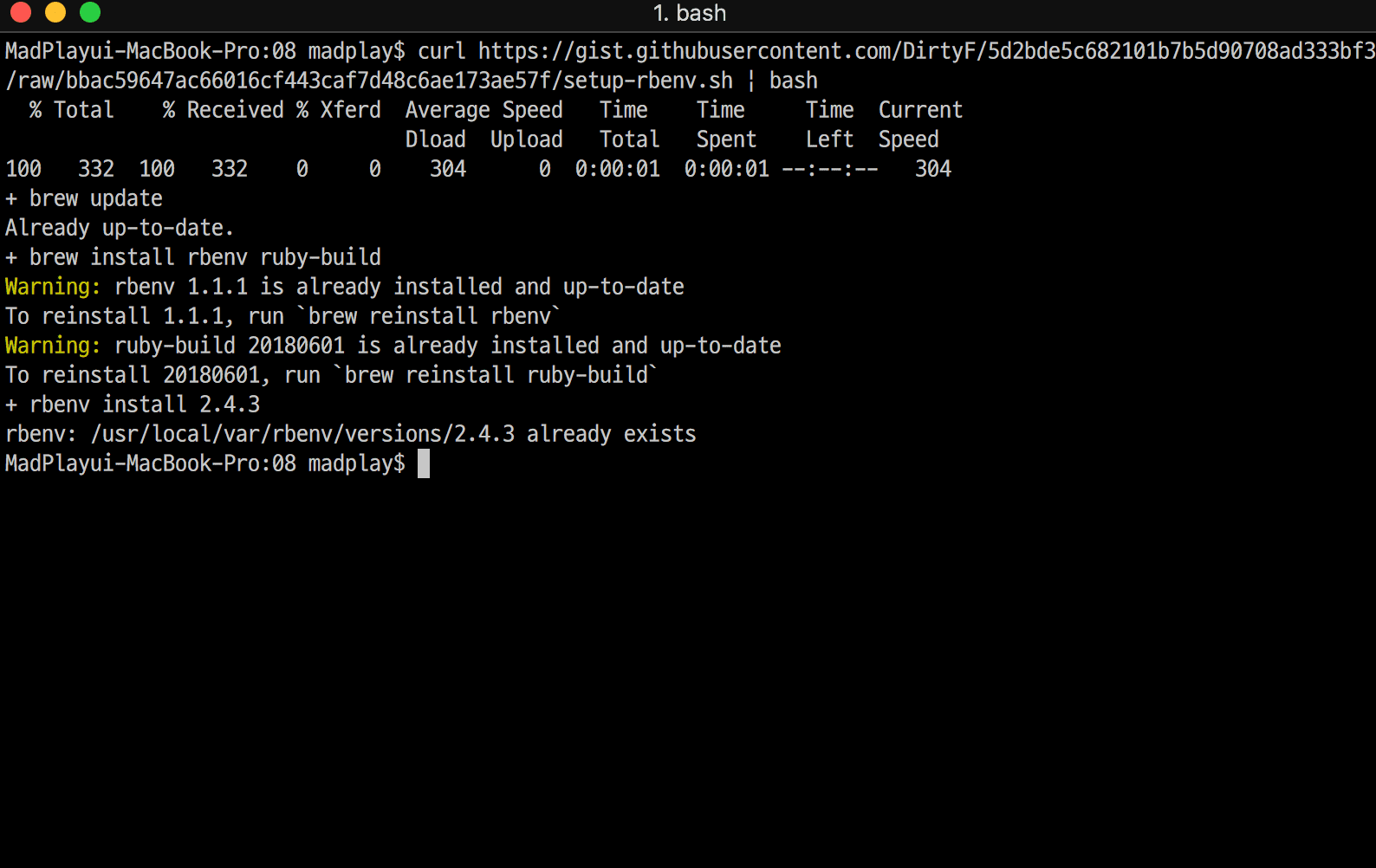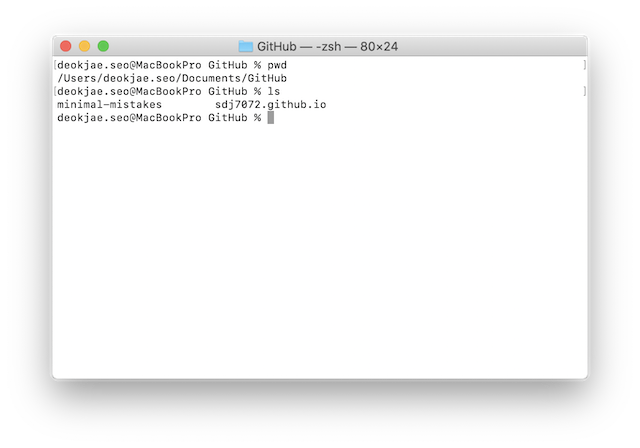
rbenv/shims, we have a collection of scripts to run ruby. There are three way to let macOS aware of ruby version, global, local, shell. rbenv/ to find version file, which tells ruby version number I want to use. drwxr - xr - x 9 ryuci staff 306 3 12 13 : 22 shims drwxr - xr - x 3 ryuci staff 102 3 12 13 : 19 versions rbenv total 0 drwxr - xr - x 4 ryuci staff 136 3 12 13 : 22. Note that there is no version file in it yet while I got versions folder.

To make 2.5 to run, I need to dig in rbenv configuration.Īs shown below, I have hidden folder. When I run ruby -v in the terminal, I can see 2.0 running. Now I have two versions of ruby, the factory installed 2.0 and the upgraded 2.5. 0 ruby - build : use openssl from homebrew Downloading ruby - 2.5. ~ $ rbenv install - lĪs of today, the latest stable version looks 2.5.0. Using following command, I can see numbers of available ruby versions. info /usr/ local / share / info is not writable. Error : Could not symlink share / info / autoconf. ~ $ brew link autoconf Linking / usr / local / Cellar / autoconf / 2.69. I changed the permission and tried again to success. Oh, I don’t have write permission on /usr/local/share/info. Īs the error message suggested, I ran brew link autoconf. You can try again using : brew link autoconf => Installation continues. gz Error : The ` brew link ` step did not complete successfully The formula built, but is not symlinked into / usr / local Could not symlink share / info / autoconf. This time I come across Error: The 'brew link' step did not complete successfully ~ $ brew install rbenv => Installing dependencies for rbenv : autoconf, pkg - config, openssl, ruby - build => Installing rbenv dependency : autoconf => Downloading https : ///bottles/autoconf-2.69.sierra.bottle # 100.0 % => Pouring autoconf - 2.69. ~ $ xcode - select - install xcode - select : note : install requested for command line developer tools Install the Command Line Tools : xcode - select => New Formulae arm - linux - gnueabihf - binutils libbitcoin - network draco => Updated Formulae anjuta libbitcoin - blockchain peco asdf libbitcoin - explorer pipenv automake libbitcoin - node rtv coffeescript libbitcoin - server vala darksky - weather libbladerf znc dehydrated nim gdl nopoll Error : Xcode alone is not sufficient on Sierra. => Auto - updated Homebrew ! Updated 1 tap ( homebrew / core ). ~ $ brew install rbenv Updating Homebrew. Great… I have another error, about Xcode this time. 10 Homebrew / homebrew - core ( git revision 537 a8 last commit 2018 - 03 - 11 ) Just check current brew version for the record. I chose to use rbenv to install ruby and, in turn, I need Homebrew to install rbenv. Īccording to internet, there are many ways to install ruby on macOS with some of them obsolete.
#Gem install jekyll bundler brew password
~ $ sudo gem install jekyll Password : ERROR : Error installing jekyll : public_suffix requires Ruby version >= 2.1. Now, I realized I needed ruby version equal to or higher than 2.1. Since it says I have no permission for /Library/Ruby/Gems/2.0.0, I tried sudo. ( Gem :: FilePermissionError ) You don ' t have write permissions for the / Library / Ruby / Gems / 2.0.

~ $ gem install jekyll ERROR : While executing gem. When I tried to install Jekyll in the setting above I got following error. You don’t need this info to install Jekyll, it’s just for my record. Ruby 2.0.0p648 ( revision 53162 ) Īlso, I have following ruby based components already installed. In my setting, I have ruby 2.0.0p648 and gem 2.0.14.1 as follows. macOS is coming with factory installed ruby, which I was not aware of until now, but it’s not suitable version to install Jekyll. Jekyll is based on ruby and the installation process heavily uses ruby companion tools.

#Gem install jekyll bundler brew how to
Therefore it’s natural and safe to have my first post on Jekyll platform to be about how to install it. If I miss something, things go wrong and I have trouble in reverting back, easily get lost. It’s mainly because I’m not sure if the instructions on the net is suitable for my setting, if I fully understand them, and if I follow them correctly.

Whenever installing open source based software, I frequently lose confidence whether I’m on the right track in the course of doing it.


 0 kommentar(er)
0 kommentar(er)
